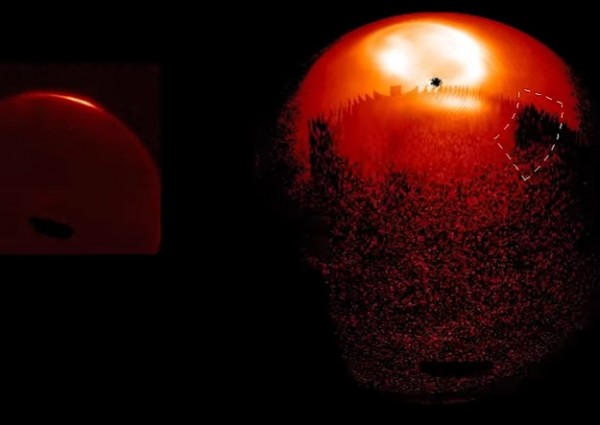By Krisana Estaura, | April 12, 2017

Unlike Jupiter's Great Red Spot, the newly discovered weather system is constantly changing in shape and size.
Just in time for the national siblings day, Astronomers discovered Jupiter's Great Red Spot's brother. This phenomenon is thought to be caused by magnetic fields surrounding the planet Jupiter, which continuously changes in shape and size.
According to researchers from University of Leicester, the new great spot is situated in Jupiter's thin upper atmosphere called the thermosphere. It is much cooler here than the hot surroundings, thus the name Great Cold Spot.
Like Us on Facebook
Unlike Jupiter's Great Red Spot, the newly discovered weather system is constantly changing in shape and size. It's formed by the energy from Jupiter's polar auroras. The dark expanse is 15,000 miles (24,000 kilometers) across and 7,500 miles (12,000 kilometers) wide.
The second great spot was discovered by accident by the British scientists who were charting the temperature and density of the giant planet' atmosphere using a telescope in Chile. The Great Cold Spot stood out as they were comparing the data with thousands of images taken in years past by a telescope in Hawaii. The scientists noted that it could be thousands of years old.
MailOnline also reported the scientists have observed spectral emissions of the hydrogen ion H3+ using the CRIRES instrument on the Very Large Telescope.
"The Great Cold Spot is much more volatile than the slowly changing Great Red Spot ... but it has reappeared for as long as we have data to search for it, for over 15 years," the University of Leicester's Tom Stallard, lead author of the study, said in a statement.
The study which was published in Geophysical Research Letters, a journal of the American Geophysical Union, also found that the upper atmosphere of Jupiter may hold other features.
The scientists will also be on the lookout for them while they study the Great Cold Spot in greater detail through ground telescopes.
Stallard also said that they will also use NASA's Juno spacecraft in orbit around Jupiter.
-
Use of Coronavirus Pandemic Drones Raises Privacy Concerns: Drones Spread Fear, Local Officials Say

-
Coronavirus Hampers The Delivery Of Lockheed Martin F-35 Stealth Fighters For 2020

-
Instagram Speeds Up Plans to Add Account Memorialization Feature Due to COVID-19 Deaths

-
NASA: Perseverance Plans to Bring 'Mars Rock' to Earth in 2031

-
600 Dead And 3,000 In The Hospital as Iranians Believed Drinking High-Concentrations of Alcohol Can Cure The Coronavirus

-
600 Dead And 3,000 In The Hospital as Iranians Believed Drinking High-Concentrations of Alcohol Can Cure The Coronavirus

-
COVID-19: Doctors, Nurses Use Virtual Reality to Learn New Skills in Treating Coronavirus Patients







